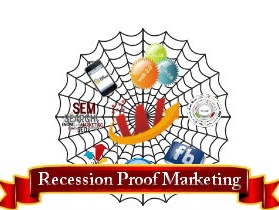
The TikTok Saga: A Rollercoaster of Deals and Diplomatic Tension
When it comes to deals involving technology and international relations, the TikTok saga has been full of ups and downs. Recently, President Donald Trump has signed an executive order that seemingly revives the TikTok platform in the U.S. while ensuring that national security is front and center. But let’s take a step back and see what’s really at stake here and what it means for the future of social media in America.
What the Deal Entails: Understanding the Key Players
According to the White House announcement, the new agreement outlines that a U.S.-based consortium headed by Oracle will acquire TikTok's U.S. operations. In essence, TikTok will be required to operate under U.S. law, with data and user privacy closely monitored. This transition will supposedly safeguard U.S. citizens' data from potential threats associated with foreign control, addressing long-standing controversies surrounding privacy and data security linked to Chinese tech companies.
However, the approval from the Chinese government remains a major hurdle. Recent reports suggest that while discussions have been productive, there's still hesitation on the Chinese side regarding the finer details of the agreement. Officials in China have raised concerns regarding how the deal fits into broader U.S.-China relations, implying this is more than just a tech acquisition—it's a diplomatic negotiation at play.
The Pulse of the Market: Could This Affect American Users?
The implications of this deal extend beyond corporate negotiations and finger-pointing between nations. For TikTok users—around 170 million Americans—the future of their favorite app hangs in the balance. Many were terrified at the thought of TikTok being banned in the U.S., which would annihilate a platform that has not only served for entertainment but also for small businesses, creators, and social connection.
If everything goes smoothly, users can expect to enjoy the same global TikTok experience, confiding in the claim that their data will remain secure under U.S. operations. But should the deal stall due to unresolved diplomatic issues, the likelihood of a ban or operational changes could return front and center, creating significant anxiety among users and creators alike.
China’s Perspective: The Bigger Picture
What adds an intriguing layer to this narrative is how this technology tussle indicates larger geopolitical tensions. A recent article cited concerns from the Chinese government that stress the need for a “fair play” environment for their companies. This statement emphasizes that their goal is not simply to engage in financial negotiations but to reshape the global investor climate, advocating for an equitable regulatory framework.
Understanding these multifaceted dynamics becomes essential for American viewers who may overlook the implications of these transactions. The TikTok deal serves as an indicator of how deeply intertwined technology is with nation-state politics, making the app not just a fun tool for creating videos but a pawn in a larger game of strategy.
Future Predictions: Can TikTok Survive the Negotiation Storm?
Looking ahead, several scenarios could unfold. If both parties can find common ground, we might see a new era of U.S.-China relations, bolstered by American tech firms that champion inclusivity and harness international collaboration. Conversely, failure to finalize this agreement could reignite frustrations and exacerbate tensions that have already permeated business discussions between the two economic giants.
Experts speculate that this situation may lead to a ripple effect on how other social media platforms navigate their overseas operations, and whether they too might need to find ways to hedge against geopolitical risks. We could observe a fragmented digital ecosystem where apps are understood within their national frameworks rather than as global entities.
Conclusion: The Ongoing Story
As it stands, the TikTok deal offers a fascinating blend of tech discussions and international diplomacy that impacts millions of users. Whether it will come to fruition depends not just on corporate negotiations but also on a broader context — a template for how technology and national interests might coexist, or collide.
So, if you’re using TikTok right now, hang tight! The outcome of this deal could redefine how you engage with your favorite app and the world around you. Stay informed as we keep an eye on what unfolds in this ever-evolving story.
 Add Row
Add Row  Add
Add 




Write A Comment